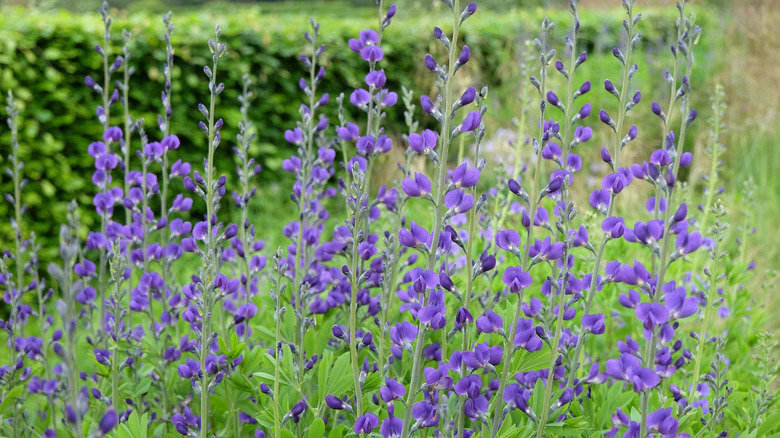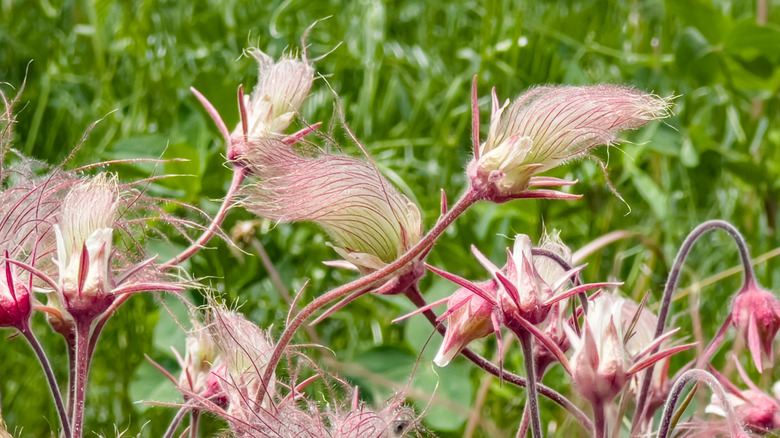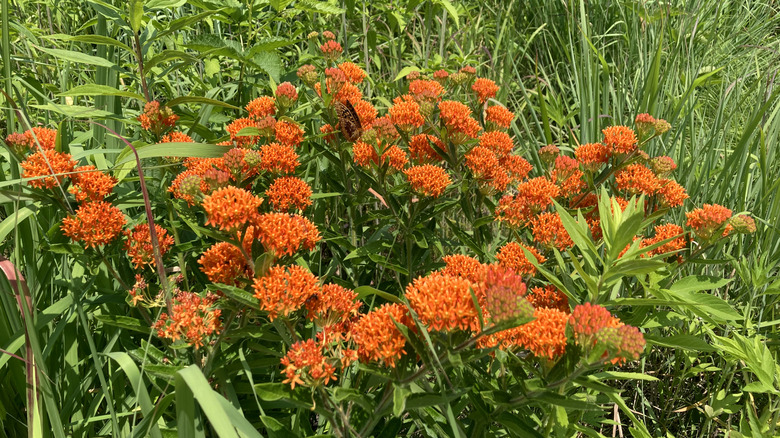Colorful Companion Plants That Add Year-Long Interest To Blue False Indigo
Blue false indigo (Baptisia australis) is a beautiful, hardy perennial that grows two to four feet and can feature stalks of nearly a hundred blue-indigo flowers. Thriving in USDA Hardiness Zones 3 through 9, it's a native to North American prairies that blooms for almost six weeks, and it's a pretty perennial that hummingbirds love. Many blue false indigo plants take a few years to reach full maturity, but they can stick around for years after, with some varieties growing in the same spot for decades. The best companion plants will have similar growth characteristics, like drought tolerance and needing full sun. If you pick perennials that bloom earlier or later in the year, you'll be able to keep your garden's visual interest high throughout the seasons.
False indigo pairs well with other flowering perennials in colors that complement the gorgeous blue-purple hue. The spring-to-fall blooms of butterfly weed, nettle-leaved mullein, and prairie smoke flowers are potential companion plants for blue false indigo.
The best companion plants for blue false indigo
The key to successful companion planting is choosing the right plant for the environment, one that won't compete with your false indigo for space or visual appeal. The companion plants here all thrive in similar conditions: full sun with well-drained soil that ranges from dry to average moisture. Prairie smoke (Geum triflorum) is a perennial with full foliage, known for its vibrant pink flowers and wispy pink seedheads. It's hardy in zones 3 through 7. Prairie smoke is an early bloomer. Like its name implies, it's a prairie plant that enjoys full sun and can survive a variety of soil conditions, just like its false indigo companion.
Nettle-leaved mullein (Verbascum chaixii) features stalks of beautiful white flower spikes with purple hearts. Hardy in zones 5 through 8, they bloom in early summer with a possible second bloom in the fall. They grow up to three feet tall and make the perfect addition to a cottage garden.
Butterflyweed (Asclepias tuberosa) is another great perennial to plant with blue false indigo that thrives in hardiness zones 3 through 9. It's adorned with large orange flower clusters. It's a beneficial plant for pollinators like monarch butterflies, hummingbirds, and bees that you can grow from seed.
Grow tips for false indigo companion plants
You can grow prairie smoke from seed indoors or outside. If you plant them indoors, start in late February so the seedlings will be ready to move outside in May. Plants can also be sown in the fall, but may grow better in the earlier part of the year. It's a relatively small plant, only 6 to 10 inches in height, so it makes a good edge plant. However, you'll need to ensure that the other plants in your garden don't deprive it of sun and other important resources.
Nettle-leaved mullein can be planted in early spring with light soil cover, ensuring the soil is moist. You won't see any flowers in the first year, but a thriving plant will display a cluster of full leaves. In the second year, the mullein flower stalk should start to fill with gorgeous white flower heads.
To grow butterfly weed from seed, start indoors or outdoors in late fall. If starting outdoors, scatter the seeds in freshly worked soil and cover with a fourth of an inch of soil. If starting seeds indoors, plant the seeds in a flat. A germination medium should be scattered on top of the soil and used to cover the seeds. Place the flat in a plastic bag, and put it in the fridge for four to six weeks before transferring the plants outdoors.


